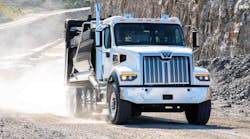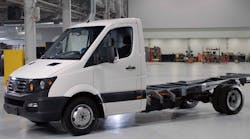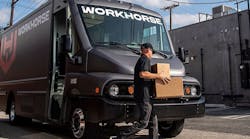Growth in equipment and software investment is expected to moderate somewhat from last year’s 9% rate, but a still-healthy growth rate of 6% is forecast for 2015, with aircraft, trucks and other industrial equipment projected to be among the higher growth types, while agriculture, computers and software are expected to see slower growth, according to the Equipment Leasing and Finance Association (ELFA).
ELFA President and CEO William G. Sutton, CAE, said, “Equipment financing is a critical source of funding for a majority of U.S. businesses, allowing them to acquire the equipment they need to operate and grow. It enables equipment acquisition, which plays a critical role in driving the supply chains across all U.S. manufacturing and service sectors.”
The other nine top equipment acquisition trends for 2015:
1. Investment in equipment and software will reach an all-time high in 2015. As the U.S. economy continues to improve, business investment is forecast to reach a record $1.484 trillion in 2015. As business investment grows, demand for equipment financing will increase.
2. Businesses will invest in equipment not just to replace aging assets, but also to aid in expansion. The pent-up replacement demand that has driven equipment investment in previous years may be supplemented by long-awaited expansion investment as capacity utilization rates in some industries reach or surpass levels historically known to spur business investment. Industries poised for investment growth include oil and gas extraction and transportation equipment manufacturing.
3. Improving market conditions will continue to increase credit supply and demand for equipment acquisitions. As the economy steadily improves and business confidence continues to increase, credit standards should modestly loosen. The propensity to finance decreased in the wake of the financial crisis as businesses deleveraged and refrained from new business investment. Since bottoming out in 2010, the rate at which businesses finance their capital spending has grown consistently and will continue to increase in 2015 with steady economic recovery and shifts in Federal Reserve policy.
4. Eyes will be on short-term interest rate increases. Expectations for the Federal Reserve to raise short-term interest rates in 2015 should spur equipment investment as businesses seek to lock in equipment financing at lower rates. Despite rate increases, businesses will find that a highly competitive “buyer’s market” will continue to make financing an attractive option for acquiring equipment.
5. Businesses will use financing for a majority of their plant, equipment and software expenditures. In 2015, 62 percent or $922 billion of investment in plant, equipment and software in the United States is expected to be financed through loans, leases and lines of credit. A majority of businesses—seven out of 10—will use at least one form of financing to acquire equipment.
6. Advances in the use of technology will drive innovative financing options. Equipment finance providers are streamlining their business processes and improving customer self-service capabilities using digital technologies. At the same time, some end-users are moving away from traditional equipment consumption models and toward hosted or managed services based on usage rather than total ownership. To meet customer demand and address evolving technology equipment requirements, equipment finance companies will tailor innovative financial offerings.
7. Several “wild cards” could impact equipment acquisition decisions. In what could be a breakout year for the U.S. economy, positive and negative external risks could affect equipment investment. Potential political gridlock, global economic weakness and geopolitical risks could be a drag on investment decisions, but GDP growth from low oil prices, a potential surge in the housing sector and sufficient capacity utilization could have firms ramping up capital expenditures.
8. Nontraditional financing will continue to grow and play a larger role in the equipment finance industry. As regulatory scrutiny increases and some banks’ lending standards tighten for certain credits, nontraditional financing sources, such as investment bankers, venture capitalists, insurance companies, crowd funders and others, are exploring opportunities in the equipment finance sector.
9. A final lease accounting standard will be released. The Financial Accounting Standards Board and the International Accounting Standards Board continue to work on the lease accounting project, which will change how leases are accounted for on corporate balance sheets. A final standard is anticipated in 2015, with a possible effective date of 2018 or later. The good news is that the benefits of leasing equipment will remain intact despite the lease accounting proposal.
For a video and infographic highlighting the Top 10 Equipment Acquisition Trends for 2015, go to http://equipmentfinanceadvantage.org/rsrcs/articles/10trends.cfm.








